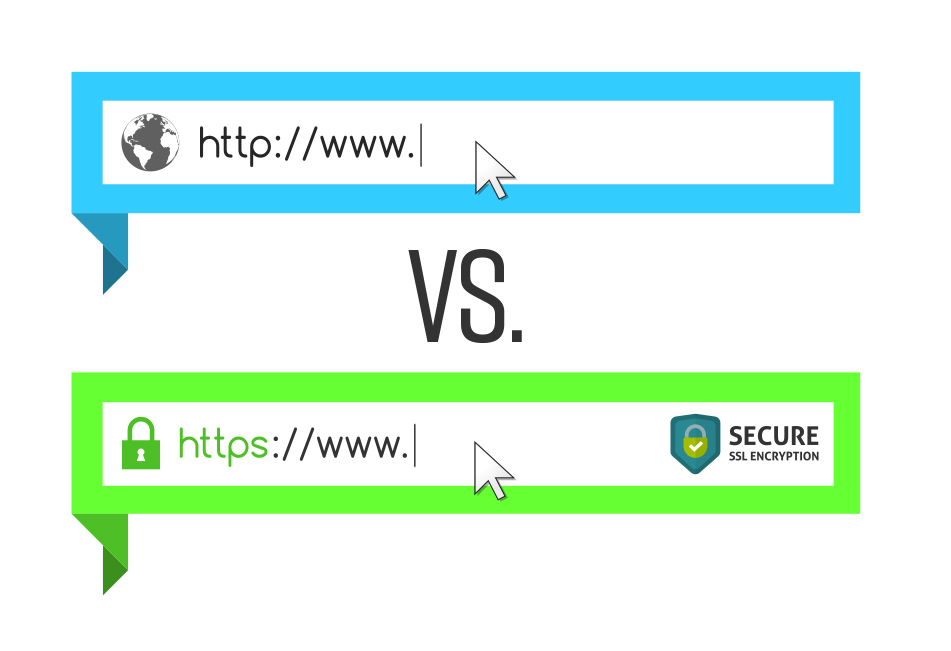Understanding HTTP vs HTTPS and Why You Should Switch
What's the difference between HTTP and HTTPS, and why does it matter which one your website uses?
As you frequent the internet, you’ve probably noticed a growing number of website addresses using HTTPS rather than HTTP. One letter of difference means a lot more than people realize, so let’s take a look at how HTTP is different than HTTPS and why you should ensure that your websites function with HTTPS.
What is HTTP?
HTTP stands for Hypertext Transfer Protocol. It was created to share information easily between servers and computers via the Internet.
At the foundation of the web, network admins needed a way to share the information put online. The straightforward method was called HyperText Transfer Protocol (HTTP). It allowed for communication across systems and most notably transferred data from web server to browser to view web pages.
It worked smoothly until e-commerce sites voiced concerns about security. HTTP data isn’t encrypted. Third-party groups can intercept the data passed between two systems, and that lack of protection weakens the trust between e-commerce sites and their markets.
In 2014, Google announced that HTTPS would become a ranking signal for its web crawlers. Why? Because according to the company, “we invest a lot in making sure that our services use industry-leading security, like strong HTTPS encryption by default. That means that people using Search, Gmail and Google Drive, for example, automatically have a secure connection to Google.”
In short, if you want your website to get in with Google’s RankBrain, you must play by the rules.
However, the announcement caused some hesitancy and skepticism for site owners who now had to pay a few extra bucks per year to make the switch. Those concerns still exist today – is it worth it to make the switch from HTTP to HTTPS, and will not switching over affect the rankings?
When Google first reconfigured their rankings to account for HTTP/HTTPS changes in 2014, the signal only affected less than 1 percent of global queries. As of this writing, however, the company is significantly cracking down on the existence of HTTP pages. Chrome now flags HTTP pages as “not secure” and notifies the website visitor of a lack of HTTP.
So what’s wrong with HTTP? In short, it’s too easy for someone to intercept valuable data as it travels from server to server.
Why add the S?
The S stands for “Secure” and in full, HTTPS means Hypertext Transfer Protocol Secure referring to the Secure Sockets Layer (SSL) used to encrypt data sent online. It scrambles the information into an encrypted message that gets unscrambled once it gets to its final destination (either a server or another computer). This encryption has become a necessity for any website that deals with sensitive information on a regular basis, especially businesses and public-sector websites like schools (link to Seminole County).
The key to making the switch is found in an SSL certificate. SSLs ensure encryption of information sent to and from your website.
There are two indicators to let you know that your website is encrypted with SSL:
- You can see the HTTPS prefix in the web address bar. (This one is the most common-sense way to tell if the site is secure)
- The web address bar shows a green lock. This is another visual representation of knowing that the website is secured with SSL.
Benefits of HTTPS
- Safer websites
HTTPS means your customers, clients, and visitors are protected. This is vital to any organization that ever gathers information from site visitors. If you’re an ecommerce store, having HTTPS is critical. Even if your website doesn’t accept payments (maybe you use PayPal), SSLs can still maintain a level of security and trust with sensitive password information that your customers submit.
- Sense of trust
People trust websites where they feel safe. That little green padlock on a URL bar instills a sense of confidence that their information is secure. Shoppers don’t need to know the nuances of an SSL or even that there’s a massive difference between HTTP and HTTPS, but that simple icon is enough to instill more trust.
- Improved SEO
As we mentioned earlier, Google weighs encryption by default. It’s far from the only factor used by Google, but it’s harder for websites to secure a high page rank without HTTPS.
- Simplified Integration
SSL affects your relationship with other websites beyond just Google. Third-party integrations like Facebook all require encryption. It makes sense; major companies want to ensure security and protect themselves from liability. Anyone wanting to use their services or work with them has to play by their rules and ensure a similar level of security with a SSL.
Easiest way to ensure HTTPS for your website
Solodev consolidates the SSL and takes care of it for clients. By running Solodev, you get all of the hosting advantages of the AWS Cloud including necessary SSL certificates. Thus, no need to worry when users need to integrate your entire stack to your website.







